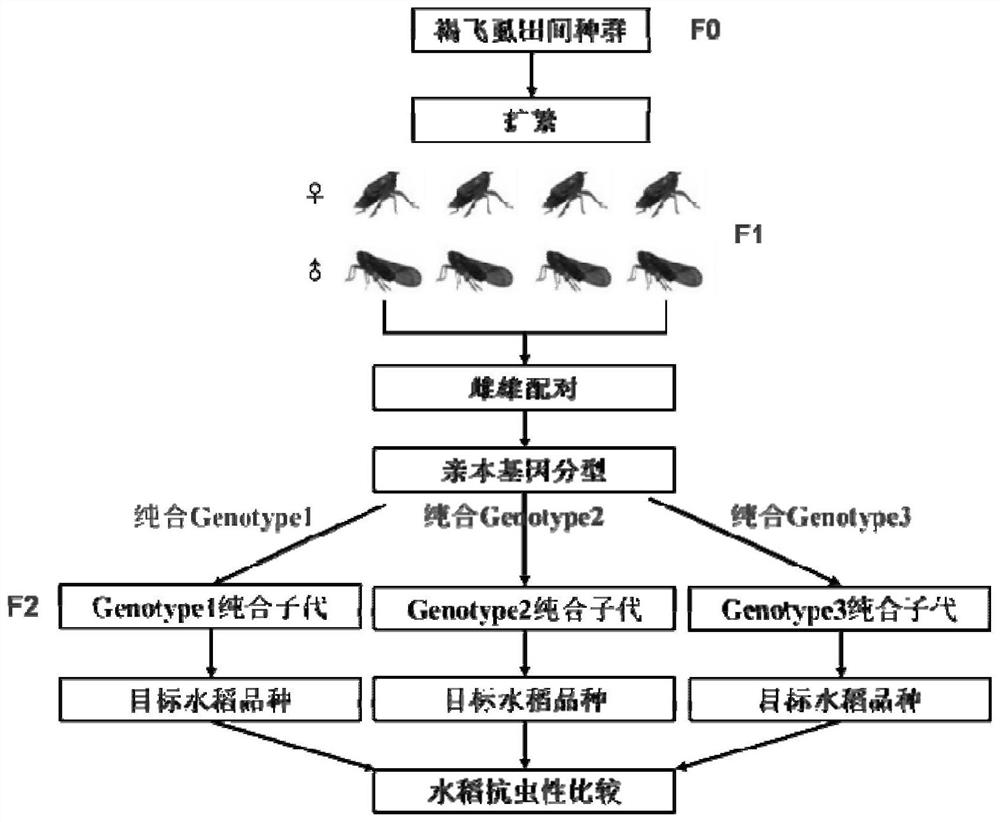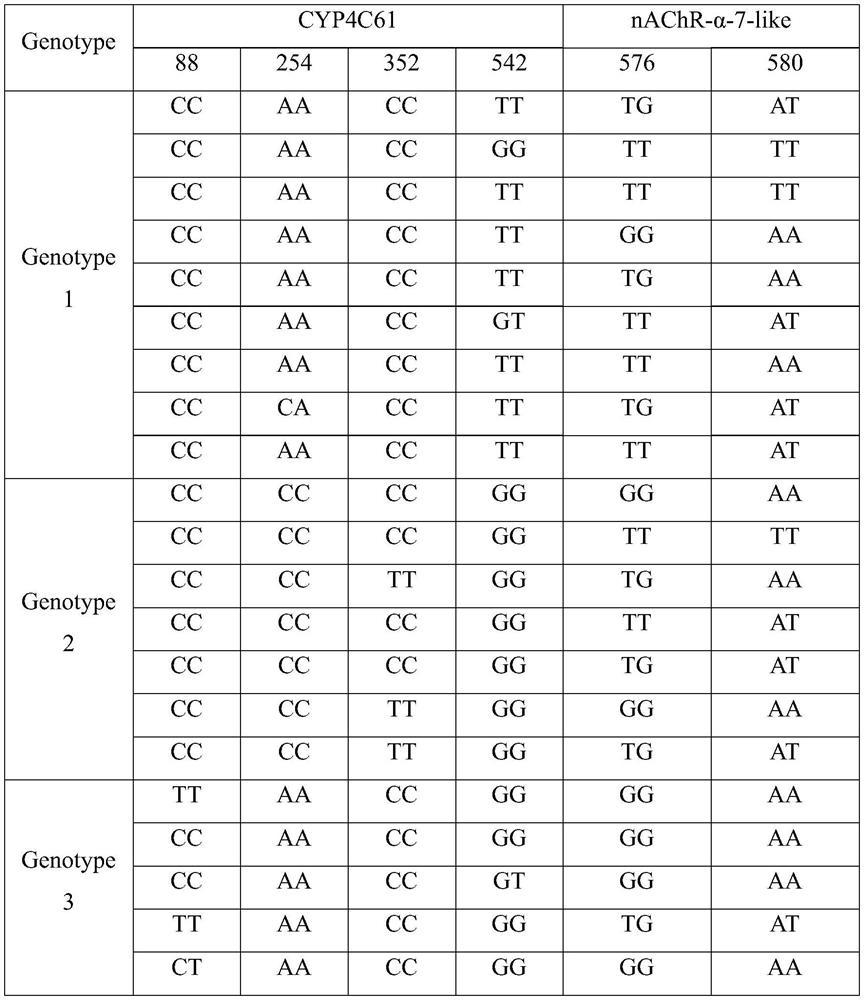A method for assessing the potential applicability of insect-resistant rice varieties based on brown planthopper-specific virulence genotypes
A genotype, brown planthopper technology, applied in biochemical equipment and methods, microbial determination/inspection, etc., can solve problems such as no special requirements for pests, artificial inoculation, and no resistance phenotype in field populations, reaching a wide range of representatives. Applicability and applicability, accurate and reliable results
- Summary
- Abstract
- Description
- Claims
- Application Information
AI Technical Summary
Problems solved by technology
Method used
Image
Examples
Embodiment 1
[0038]Example 1 Harmful genotype analysis of brown planthopper field populations in different regions
[0039] In order to verify the combination of genetic variation sites found in the present invention, any N. lugens field population can be divided into three genotypes related to virulence, which has extremely wide representation and applicability. The inventors randomly sampled the field population of N. lugens in Shaoguan, Guangdong, Zunyi, Guizhou, and Zhoushan, Zhejiang in 2017, and analyzed the harmful genotypes of the collected N. lugens samples through the steps of extracting N. lugens DNA, PCR amplification and sequencing. Classification.
[0040] 1. Genomic DNA extraction of brown planthopper
[0041] The present invention uses the Genomic DNAIsolation Kit of OMEGA company to extract genomic DNA, and the steps are as follows:
[0042] (1) Take the worms and grind them in liquid nitrogen thoroughly, and add 500 μL of Buffer GTC / 2-Me;
[0043] (2) Vortex vigorously...
Embodiment 2
[0071] Example 2 Method for assessing the potential applicability of insect-resistant rice varieties based on the specific virulence genotypes of the brown planthopper
[0072] A method for evaluating the potential applicability of insect-resistant rice varieties based on the specific virulence genotypes of the brown planthopper. The technical roadmap is shown in figure 1 shown.
[0073] 1. Treatment of brown planthopper field population;
[0074] The N. lugens field populations P-SG were captured in the field of Shaoguan, Guangdong, respectively, and placed on the susceptible rice variety TN1 to propagate for one generation.
[0075] After the worms grow into adults, the female adults and male adults are paired in pairs and transferred to TN1 rice in the middle stage of tillering to be reared separately. After ensuring that the female worms mate with the male worms and lay eggs for 7 days, the parental adult worms are removed for subsequent use. Genomic DNA extraction.
[...
PUM
 Login to View More
Login to View More Abstract
Description
Claims
Application Information
 Login to View More
Login to View More - R&D
- Intellectual Property
- Life Sciences
- Materials
- Tech Scout
- Unparalleled Data Quality
- Higher Quality Content
- 60% Fewer Hallucinations
Browse by: Latest US Patents, China's latest patents, Technical Efficacy Thesaurus, Application Domain, Technology Topic, Popular Technical Reports.
© 2025 PatSnap. All rights reserved.Legal|Privacy policy|Modern Slavery Act Transparency Statement|Sitemap|About US| Contact US: help@patsnap.com



